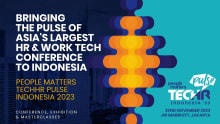Re-inventing the ‘desired’ skill set of your employees

'Desired skill set' used to be an extremely simple phrase for any organization, a while ago. The process of identifying the desired skill set was a very basic one: Look at your current range of products/services, consider predictable changes in the product/service offerings in the near future and then hire people with relevant qualifications. While this process had multiple steps to it, at a broad level, this is all that it was.
Reviewing the current industry scenario, we see a plethora of start-ups offering cutting edge innovation, a powerful digital revolution, a Gen Y workforce with its unique demands; the list could go on… Does the definition of desired skill set remain the same, in this context? Or are we being pushed to relook at it and redefine it? Historically, what seemed to be a simple process is now one of the most critical questions for any organization.
The challenges:
Let’s review some of the challenges organizations face today in this context:-
- The hiring dilemma: Do you hire for skills or for attitude? This could be a make or break question. What then is the definition of desired skill set while hiring?
- Developing and sustaining soft capabilities: While technology is a hard skill, softer capabilities often provide sustainable competitive advantage to an organization
- The stress of keeping up: How does a workforce stay updated in the face of the rapid evolution of technology?
- The dynamic nature of “desired skill set”: This is essentially an off shoot of the previous point. Considering the environment we operate in, “desired skill set” does not have state of permanence around it; it is constantly changing.
What are organizations doing differently?
So what are organizations doing to address this? The skill set landscape in organizations has been a fast changing one. On the hiring front, organizations are bringing in psychometrics (not necessarily as a conclusive tool but as an indicative one), recruiters are being upskilled on behavioral interviewing to be able to check on cultural and attitudinal fitment. Softer skill sets are being emphasized throughout the year in the annual calendar. Leadership development programs focus on developing complex behavioral skill sets in leaders. With a recent Mckinsey report predicting that half of the 3.9 million-strong workforce in IT services firms will become irrelevant, organizations are continuously in the process of identifying high potential employees who can continue to work on complex product threads and keep suites of products relevant in the future. Most importantly, desired skill sets are constantly evolving. Additionally, organizations are increasingly training their employees on more diversified skill sets to match up to the changing needs of their customers. That’s precisely why “ambiguity” is no longer a vice, but a reality and “dealing with ambiguity” a part of most competency frameworks.
Leaders play an important role…
Leaders play a pivotal role in this constant process of reinvention. Here are few key areas where leaders can make all the difference in reinventing desired skill set and keeping employees ready for the future:
- Foresight and intuition regarding the industry: Leaders who are quick to gauge how the future industry looks like are best placed to guide teams/organizations on what skill set to invest in. How you prepare or re-skill your staff to remain relevant in the future is one of the most critical questions today
- Partnering on talent management: Talent management is not an exclusive HR responsibility. Without real time inputs from business leaders on the technology shifts, business challenges, predictions on directional shifts, and the talent management strategy of an organization will not be effective
- Accurate identification of skill gap: Leaders should be constantly aware of evolving skill gaps and share the inputs on an ongoing basis with the Learning team
- Investment in development: Leaders have to see value in investing in people development, both technically and behaviorally. While a lot of leaders are perpetually conscious of utilization as a business metric, they have to make space for developmental interventions in their own and their team’s calendar
- A role model for skills and behavior: To inspire employees to focus on development, leaders need to be role models for critical behaviors like agility, openness to change and dealing with ambiguity. More often than not, teams observe and emulate the behaviour and approach of their leader to manage their careers
- Learning on the job: While most organizations have a plethora of class room and web based training options, very few have a plan around on the job coaching. A part of the desired skill set, that is knowledge/conceptual clarity may come from class room or web based courses, but an effective job output requires much more than that. On the job support and coaching is much more holistic in its approach and helps one get faster results.
One thing that is absolutely clear, is that “desired skillset” is a dynamic concept. So the way to define it can’t be a linear one. Every organization has to have a well thought through, yet intuitive way to define it and continue to monitor and reinvent it.
In summary, what will come in handy are three things:-
1) Not restricting the definition of the 'desired skill set' to the current suite of products and services that the organization offers
2) Consistent focus on directional shifts of the market, and
3) An agile structure that supports a customized talent management strategy keeping the first two points in mind.
These factors will enable organizations to successfully embrace change and disruption, address ambiguity and continue to survive and succeed.
















